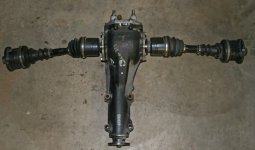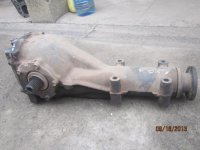CalG
Super Member
- Joined
- Sep 29, 2011
- Messages
- 5,777
- Location
- vermont
- Tractor
- Hurlimann 435, Fordson E27n, Bolens HT-23, Kubota B7200, Kubota B2601
Yes, in an open differential, with a constant input speed, if you stop one axle the spider gears start spinning and the other axle will be spinning at twice the speed it was before.
There is always the compromise condition of only enough pull as needed to shift the load.
100% lock up of the off side is not always required.
torque and speed are traded in the case of an open diff.....



